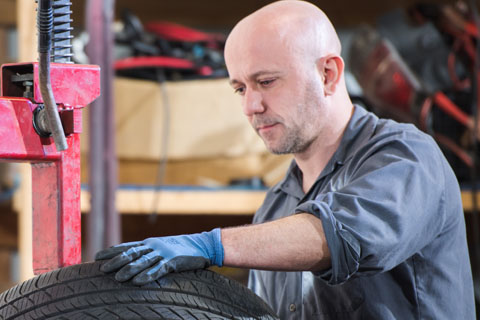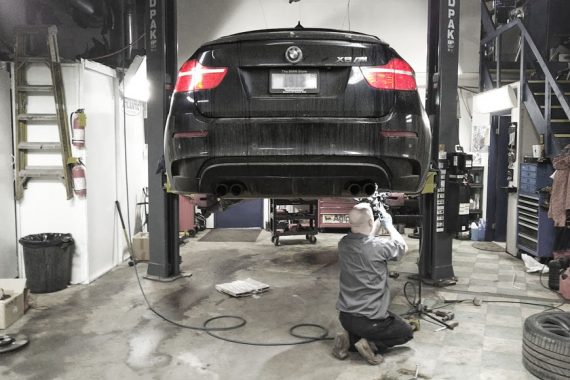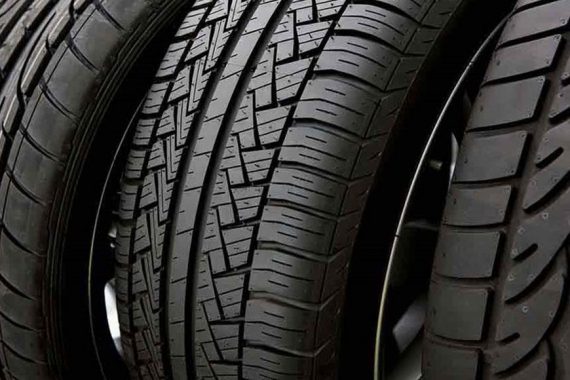High quality, good condition tires are an important safety mechanism. They are the the first point in the braking system of your car and have the important role of keeping your car gripped to the road. Equally as important is aligned and balanced wheels to make your car a pleasure to drive.
Regular servicing will keep tabs on your tire condition and is also a good opportunity to have wheel alignments and wheel balances performed. They are lost cost and can greatly improve your driving experience.
TIRE CHANGE




BRIEF DESCRIPTION
PRICE LIST
| Steel Rims | $14.95/Tire |
| Alloy Rims | $19.95/Tire |
| Stick On Weights | $1.50/Tire |
| TPMS Sensor New | $64.95/PC |
| Mounted Tires Change | $25.00/Car |
| TPMS Diagnosis | $25.00/Car |
| Call Us for an Appointment! | 519 498 5952 |
KEY NOTES
We recommend to replace your tire if:
– The tread is worn beyond the recommended tread depth levels
– The sidewall is damaged
– Any hole in the tread is greater than 6 mm in diameter
– The bead is damaged or deformed (the bead is the edge of the tire that sits on the wheel)
1- Inspect your tire regularly and look for:
– Uneven tread wear
– Shallow tread
– Troublemakers (rocks, nails, etc.)
– Damaged areas
– Damaged valve caps
2- Pay attention to the “feel” of your tires as you drive.
– A rough ride may indicate tire damage or excessive wear.
– If you notice vibrations or other disturbances while driving, immediately reduce speed, drive with caution until you can safely pull off the road and stop, and inspect your tires.
– If a tire is damaged, deflate it and replace it with your spare. If you do not see any tire damage and cannot identify the source of the vibration, take the vehicle to a tire dealer for a thorough inspection.
3- See a professional
– If you see something that you’re not sure about during your inspection, have it examined by your tire dealer.
In order to effectively grip the road, evacuate water and maintain control, your tires need to have a safe amount of remaining tread. If the grooves in the tire design have almost disappeared, the tire will simply not grip the road as well. This is particularly dangerous in wet or winter conditions plus, if you drive with tires under the legal tread limit, you may be fined. You should check the wear of your tires regularly. If your tires are approaching the legal limit or if you have any doubts, get them checked by a tire professional. Or see below how to check it yourself.
How to check if you have enough tread left? We can give you two tips:
1. Check the tread wear with a tread-depth gauge
– Make sure that the hand brake is on and the car is in first gear (for manual gearboxes) or park (for automatics).
– Check the depth of the main tread grooves in several places across and around the tire, using the gauge as instructed by its manufacturer.
– The legal minimum tread depth is 1.6 mm.
2. Check the tread wear indicators
– Tires have tread-wear indicators molded into the base of the main grooves.
– When the tread surface is worn to the same level as these indicators, the tire is at the legal limit and should be replaced.
To make sure that you are always safe, your tyres need to be adapted to your current weather conditions.
1. All-Season:
Built to handle “everyday” driving conditions. They have great grip on dry and wet roads as well as acceptable snow traction in regions with light winter weather. All-season tires are a practical solution designed for year-round usage, typically with a longer tread life. However, if you have all-season tires and the winter weather is severe, you should consider changing to winter tires for the heavy winter months.
2. Summer tires:
These tires are optimised for dry and wet performance levels in a warmer environment. However, if you live in a climate where winter temperatures are colder and approach freezing regularly, you should consider changing to winter tires during the cold months.
The rubber on summer tyres is not designed to handle temperatures below 7 °C – it gets stiffer and loses grip.
3. Winter tires:
When temperature often dips below 7 °C, you should consider winter tires for the cold season. They are specifically designed to offer optimal levels of traction on ice, snow and slush in addition to wet and dry road surfaces in severe cold weather conditions. They will give you maximum safety in winter driving situations. However, winter tires are not intended for year-round usage.
What is it?
– Sometimes when tires are mounted the distribution of weight of the tire+wheel assembly is not perfectly even all around the tire.
– A wheel is out of balance when one area is heavier or lighter than the rest. The result is bouncing or wobbling, which can decrease tread life, increase vibration and cause stress on your vehicle.
– Tire balancing compensates for the weight differences to make sure that the tire weight is balanced. Tyre professionals will add weights where necessary to counterbalance the tires.
When should I balance my tires?
– When a tire is replaced
– When a balance weight is moved or removed
– When you purchase new tires
How are wheels balanced?
1. To balance a wheel, your mechanic uses a balancing machine to determine where the heavy spots are.
are.
2. Weights are then attached to the exterior or interior of the wheel to counteract the centrifugal forces acting on the heavy areas when the wheel is turning.
If you ever feel bouncing, wobbling or vibrations, consult a tire professional quickly!
What should I know? (also known as “Suspension alignment”)
Tire alignment is a simple process, which may require slight adjustment of front and/or rear suspension components. If your alignment is off, your vehicle isn’t safe to drive.
When should I have my tire wheel alignment checked?
– You’ve hit a sizable object on the road.
– You see a wear pattern developing on the shoulders (outer edges) of the tires.
– You notice a difference in your vehicle’s handling or when you are steering.
– When you replace suspension or steering components.
– At least every 10,000 kilometers.
A few things to watch for:
– Your vehicle pulls or drifts to one side, when you are travelling on a straight, flat road.
– Your steering wheel does not return easily after a turn.
– Your steering wheel remains at an angle when driving in a straight line.
Why is important?
– To minimise wear and tear on your vehicle and to maximise driver and passenger comfort.
– To reduce wear on your tires, help to increase their life and performance, and improve fuel economy.
– To improve handling and driving safety by reducing steering and stability problems.
General Guidelines
– Check the pressure of all your tires monthly, including the spare. Even if you don’t see any damage, tires can lose up to 1 psi – pounds per square inch – every month. This can be accelerated by air leaks due to accidental puncture, leaks in the valve or valve cap, or by wheel malfunction.
– Check your tire pressure before making a long trip.
– For the best results, check your tire pressure when the tires are cool – before driving the car or if it has covered less than 3 KM at low speed.
– If the tire is hot, add 4-5 psi to the car manufacturer’s recommended pressure value or wait until it has cooled down, which is an average of three hours after parking the car.
How do I check my tire pressure?
1. Insert the pressure gauge into the valve stem on your tire.
2. The gauge will “pop” out and show a number that coresponds to the internal pressure in the psi number.
3. The hissing sound is air escaping the tire. It shouldn’t affect pressure substantially, unless you hold down the air-pressure gauge for too long.
4. Compare the measured psi to the recommended psi.
5. If the psi is above the recommended number, let air out until they match. If it’s below, add air until it reaches the proper number.
Where can I find the recommended pressure for my tires?
– In the vehicle owner’s manual.
– On a sticker on the driver’s door or the fuel tank door.
– Do not use the number on your tire’s sidewall, as this does not indicate the pressure needed in your tire.
Getting it right is important
– Under-inflated or over-inflated tires can wear down faster than expected, have reduced grip and can consume more fuel. It just takes a few minutes a month to help ensure your safety and the longevity of your tyres.
